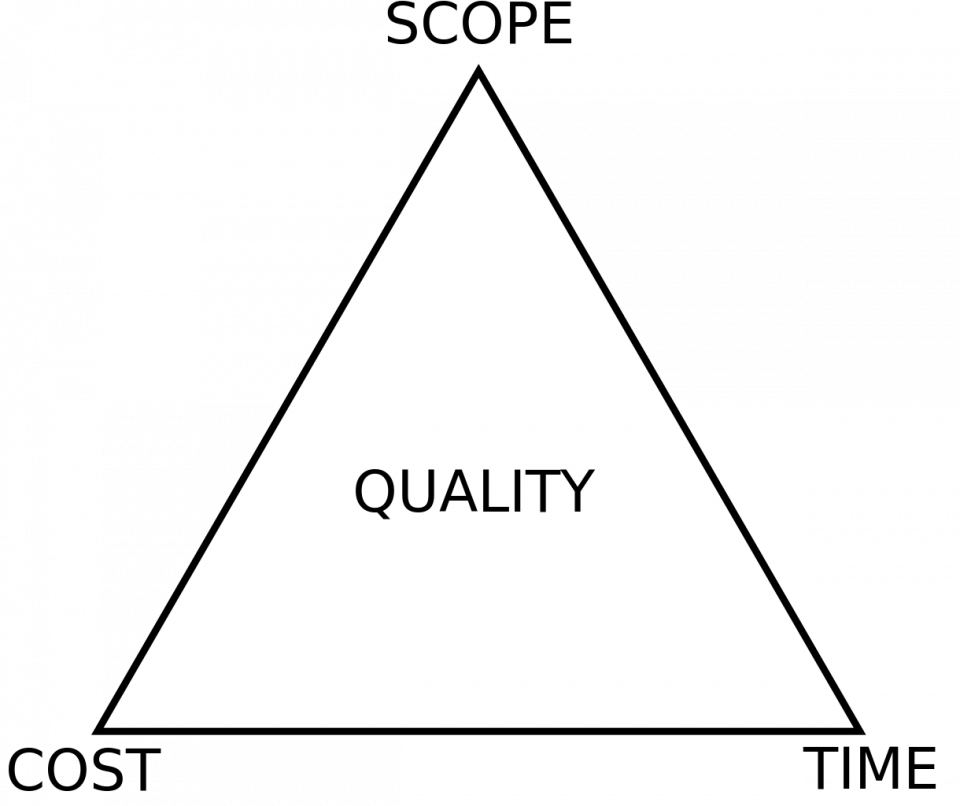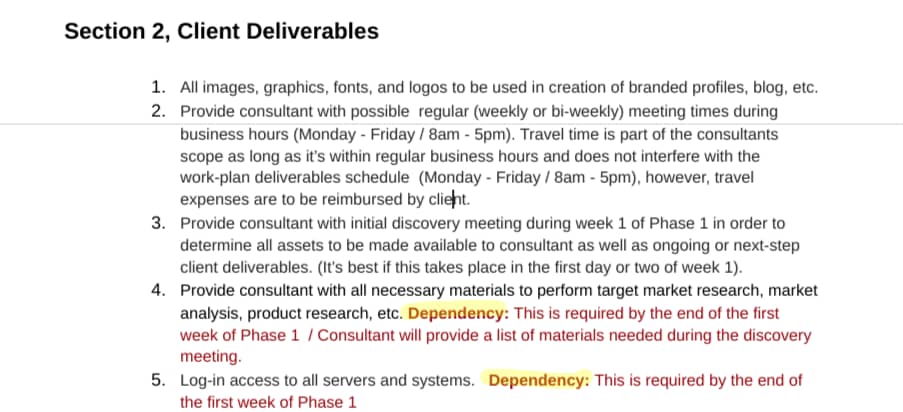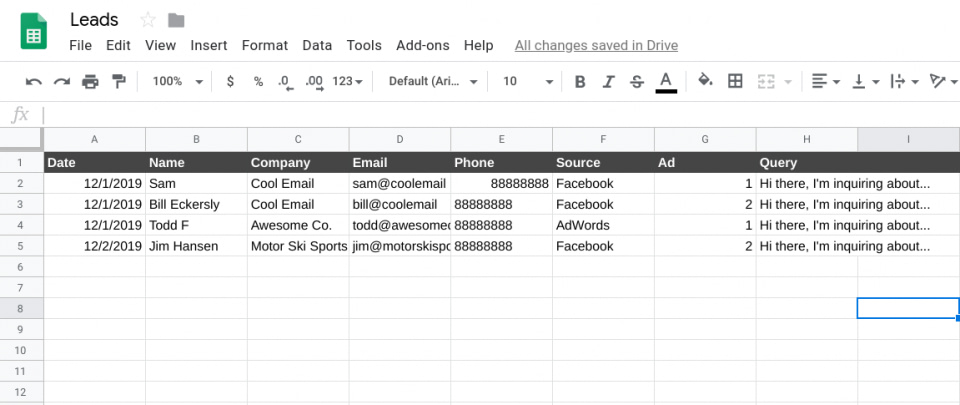Freelance Digital Marketing - The Ultimate Guide
Chapter 5:
Client Retention - How To Keep Your Freelance Clients Happy

In the last chapter of the Freelance Digital Marketing Ultimate Guide, we talked about managing your Freelance business like a pro...
By now you should know your niche and some strategies for getting freelance clients, and hopefully you’ve got a client or two already signed and working with you!
Which leads us to the next big step in your freelance marketing career...
Learning how to keep your clients happy and getting them to stick around, AKA, retention...
So in this chapter of the guide, we’re covering tips, strategies, and practical advice for keeping your freelance clients happy and getting them to continue to work with you!
Ready?
Buckle up freelancer, here we go...
Are you new to this guide? If so, here’s a quick overview of all the chapters in this Ultimate Guide To Freelance Digital Marketing:
Freelance Digital Marketing - The Ultimate Guide (Overview)
- How To Choose Your Niche As A Freelance Digital Marketer
- Pricing Strategy - How To Price Your Freelance Marketing Business
- Client Acquisition - How To Get Freelance Marketing Clients
- Operations - How To Manage Your Freelance Marketing Business Like A Pro
- Client Retention - How To Keep Your Clients Happy
- Scaling - How To Grow Your Freelance Marketing Business
Why Freelance Client Retention Is So Important

When you first start out as a freelancer, it's a bit like learning how to swim for the first time.
You jump in the water, flail about, sink a few times, and eventually you either learn how to stay above water or you get out and give up.
Starting out as a freelancer is like that.
Sink or swim.
New freelancers are all over the place:
But eventually you will reach a tipping point where you need to streamline your day to day operations if you're going to continue to grow.
And that’s where client retention comes in.
Retention is such a critical component to your freelance success that we decided to dedicate an entire chapter of the guide to getting it right.
So what is freelance client retention and why does it matter so much?
“
Retention simply means keeping your clients around (retaining them) so that they continue to work with you and continue to pay you.
Thrive Themes
That sounds like a good thing, right?
If your clients aren’t renewing their contracts or are walking away from your campaigns, that means you have to constantly go out and get new clients to stay in business.
Alternatively, retaining current clients takes a lot less work and is more cost effective than constantly chasing after new clients.
Getting a new client requires hours of work, possibly an advertising budget, and a ton of effort to onboard them, whereas keeping a current client happy is far less laborious.
In fact, for companies, according to huify.com, it may be up to 5 times more expensive to acquire a new customer versus the costs of retaining current customers, and while this guide is for freelancers, not traditional companies, we believe this is just as important if not more so for the average freelancer who relies on 1 - 5 clients.
Fix Retention Before Bringing on More Clients
You wouldn't continue trying to fill up a leaky bucket if it has holes in it would you?
If you haven't fixed retention problems before trying to grow, you'll find yourself trying to fill up the proverbial leaky bucket.
As clients leave, you will be forced to constantly go out and acquire new clients to fill your revenue gaps and that is ultimately much more expensive than it is to keep your current clients.
After working with a client for a while, building your relationship with them, and getting results for their campaign, it becomes much easier to continue that progress than it does to start over from scratch with a new client.
Many freelancers don't consider the impact that client retention has on their business because they may be in hustle mode trying everything they can to bring on new clients.

“People are willing to pay more if they know they're going to get a good experience. With good experiences come greater margins and also greater customer retention.” - Brian Solis
So how can you change your mindset and start serving your clients better?
One approach is to start treating your freelance jobs like a business, instead of a side hustle.
It’s a simple mindset shift, but one with massive upside potential.
Freelancing Business VS Freelancing Side Hustle

We’ve talked about this in other chapters of The Ultimate Guide to Freelance Digital Marketing, but it’s so important to retention that we’ve created an entire section dedicated to this mindset shift.
Treating your freelance activities like a business instead of a side hustle might be the power move you need to grow your profits and eventually, one day, turn those activities into a real business.
What does it mean to treat freelancing like a business and why is it so important to your success?
As a freelancer it's easy to get into the trap of thinking of yourself as simply a contractor... as somebody who does side work for people, but the reality is you are operating as a business whether you think of it as one or not.
You have to deal with some of the same issues businesses face every day:
Taxes, profit-and-loss, revenues, getting clients, losing clients, customer service...
...And every one of those functions can make or break a freelancer’s career.
Businesses operate as a structure designed to generate profit, and streamlining necessary functions is one of the ways they achieve that goal... and there's no reason a freelancer can't do the same thing.
In order to do that, however, you have to approach your freelancing activities as a business and start looking for ways to streamline your operations.
Relationship Building
In a very real sense, a freelancing career - just like a business - is nothing more than a collection of relationships and agreements.
You form a relationship, agree on an exchange of value, and then have to deliver on that agreement.
It doesn't matter if you're selling a one-time product or ongoing services, as a freelancer your relationship with your clients will determine your long-term success.
If a business operates with honesty and integrity, and creates value in the marketplace, they have the chance to build great relationships and generate goodwill and repeat business with their customers as well as referrals.
The same is also true for freelancers.
Building strong relationships for the freelancer is crucial. Without great relationships built on trust and value, your clients will leave and you will be forced to constantly search for new clients.
Once a relationship has soured, you’re also at risk of receiving negative reviews from a client, putting future client acquisition in jeopardy.
That’s why we consider relationship building so critical to client retention and your long term freelancing success.
Create a Mission Statement
A mission statement is a written statement (usually no more than a couple paragraphs) that businesses often create in order to codify a specific set of values to use internally and as a way to communicate those values to their ideal customers.
This is also a great way for a freelancer to start building a “business mindset”, and set rules for how they’re going to work with clients (relationship building).
But why should you bother? As a freelancer, you have a lot going on, right?
The reason is simple: a mission statement is a simple, powerful way to communicate to your clients and contractors what you’re all about and how you can add value to their businesses and lives.
If, for example, you find yourself struggling to explain why you’re a great fit for a client’s business, then a mission statement might be just the thing you need to gain clarity the value you can bring to the table.
So in this section we're going to walk through a brief exercise for creating a mission statement for your freelance digital marketing business.
Note: If you’ve worked through our chapter on how to choose your niche as a freelance digital marketer, you should have a solid basis for working through this exercise.
On a sheet of paper write down brief answers to the questions below:
- Who does your business serve? (Note: for this question, you want to write down your ideal client.)
- What value do you deliver for your ideal client?
- What is your ultimate goal for your business?
- What are your core values, strengths, and promises that you can give your ideal market?
- What do you do better than anybody else in your field?
Now you have a simple framework that you can use to create your own mission statement.
A typical mission statement is only a few sentences... maybe at most a couple paragraphs.
It’s actually pretty difficult to condense all that down into a few sentences, but once you have it the way you want it, it can be a powerful device for client acquisition and for building your “business mindset.”
Here’s an example from Lindsay Pietroluongo on the Elegant Themes Blog:

““I provide tailored ideas, polished articles and trustworthy editorial support for creative brands and professionals. Elevated writing endures, and I work to create the type of warm, unforgettable copy that’s always charmed me.” - Lindsay Pietroluongo
Here’s a few tips for writing your freelance mission statement:
- Keep it short, impactful, and powerful.
- Consider your long term strategy - don’t create a mission statement that limits your growth, and be ready to adapt it on the fly if needed.
- Write with your ideal clients in mind, speak to their needs and problems.
- Treat it as an evolving document. Go back to it often - as your business and skill sets change, so too might your mission statement.
- Share it with friends, family, employees, contractors, and your clients for feedback.
Now that you have your mission statement ready, you can use that on your website, proposals, and any other assets you have to help you better earn and retain the right clients.
Have a Friction-free Client Intake Process

We can't emphasize this enough:
Eliminating friction during the client intake process can have a huge impact on your relationships with new clients.
It’s all about positive first impressions.
The harder you make it for a client to do something like sign an agreement with you, send you payment, or continue on as your client, the more you increase the likelihood that they will drop off simply due to frustration.
The following principle should be used throughout your operations:
Streamline everything that you possibly can and make everything super easy for your clients and contractors.
Think about it from the perspective of your client:
Let’s say you’ve got an awesome new client on the hook. They’re super excited to sign up with you! Sweet! Unfortunately, you have an insanely difficult onboarding process and everything starts to slow down: your contracts look like a team of corporate lawyers drafted them, your proposal isn’t clear (prompting a ton of back and forth), and you only accept paper checks via snail mail.
Pretty soon your new client is starting to lose interest with all the back and forth, and once that happens the relationship is already on the fence.
Note: we go over tons of ideas for streamlining your freelance operations in this chapter of the guide. Follow the recommendations there for setting up your own friction-free onboarding process for new clients.
Customer Service = Customer Happiness

Now that you’re starting to think about your freelance work like a business, the next big area to tackle is customer service.
If you're like most freelancers, your clients are paying you for your expertise and results...
They contracted with you to help them grow their organization, and they may be paying you a lot of money, in which case they're probably looking at their relationship with you as an investment.
Which is why customer service and customer happiness is so important to retention.
Once you start to see your clients as customers, and use some basic principles of customer service to keep them happy, your relationship will begin to improve as well.
Getting customer service right is fairly simple in theory but often hard in practice.
Keeping your clients in the loop, responding to their emails, texts, and calls, being on the ball with your contracts, and helping them when needed are all key pillars of an awesome freelance customer service strategy.
By contrast, if you're managing your projects on the fly and your communication is erratic, your client might start to feel like you're dropping the ball, and that could factor in when it comes time to evaluate your relationship.
Try creating simple rules and processes like the following for yourself to stay on top of client happiness:
- Depending on the project needs, send a report to your client every day, once a week, or twice a month as a way to manage the scope of work.
- Set a recurring calendar item once a week to hold a client update call.
- Create a rule for yourself and your contractors that you never wait longer than 1 hour to respond to a client request.
Whatever processes you decide on to keep clients happy, write them down and make sure you stick to them.
Create a Plan To Deal With Negative Customer Feedback
Now that you’re thinking about your customers and clients in a new light...
It’s time to prepare yourself for the inevitable negative pushback, review, or complaint.
As you grow you’re bound to ruffle a few feathers, make mistakes, or miss the ball on a campaign or two...
That’s why it helps to have a plan in place for negative feedback, and we’ve got you covered with the LATTE approach.
In this post we go over strategies for reacting to negative reviews from customers, but the big takeaway is a simple framework for dealing with incoming negative complaints and feedback.
LATTE is an acronym that stands for:

The LATTE approach to negative customer feedback
These simple rules can help you stay on good footing with your client.
Nobody likes a hothead, so to turn the situation around, deal with the problem head-on, with grace, and with the goal of turning lemons into lemonade (sour into sweet).
How to Keep the Scope of Your Project in Check
The single most important thing in your relationship with clients will be your project Scope of Work (S.O.W.) and contract.
The super simple “Project Management Triangle” concept illustrates the need for a well managed project, and makes the case that quality work for any project is determined by three main factors: budget, deadlines, and scope:

The Project Management Triangle
If you accurately plan out the scope, time it will take to complete (including deadlines), and the cost of projects, you should be able to create quality results and avoid problems like Scope Creep.
FreelancerMap.com identifies Scope Creep as one of the top reasons freelancer projects fail:
“One of the biggest things to keep in mind for projects is that they change. Ideas, priorities and goals evolve. If these changes are not handled properly, the so-called scope creep can occur. When a project’s scope keeps growing or changing without control mechanisms in place, things tend to get out of hand.”
If your project snowballs out of control and you’re unable to meet your obligations, your awesome new freelance gig will soon be a thing of the past.
Having a reasonable and manageable Scope of Work to follow is one of the best ways to protect yourself.
If you can actually hit your deadlines and fulfill your obligations, you’ll be in great shape with your client.
Now that we’ve established how your long term success is tied to your SOW, let’s go through some ways to set appropriate expectations with your client so you stay on the same page throughout your engagement.
Managing Client Expectations (Promise Low, Deliver High)
Is it possible to have happy clients by doing less work?
Yes!
But how is that possible?
It comes down to setting appropriate expectations for your working relationship in advance of starting a project in order to maintain fluid operations for the duration of the project. That helps you keep your client happy and your project on task.
In fact, setting appropriate expectations is absolutely key to a successful relationship.
You don't want to enter into a contract with open-ended deliverables and expectations that are too high because eventually you will fail to meet your obligations to your client, they will become dissatisfied, and the working relationship will sour.
By setting manageable expectations for your project that you can actually deliver on (and hopefully over-deliver on), you’re benefiting yourself and your client.
And, the best part... promising low and delivering high means less work for you and happier clients.
Here are four tips for setting appropriate expectations in your Scope of Work, initial client calls, and contract:
Managing Client Expectations - Tip # 1
Know exactly what you can deliver within a reasonable time frame and make sure that each action item is clearly written down in the deliverable portion of the contract or scope of work. Make sure your client understands that adding extra items (added scope) mid-campaign is not included, must be agreed upon, and will add additional charges to your next invoice.
Why’s it so important? Leaving yourself open to randomly added scope will hurt your chances of delivering on your promises, eat away at your profits, and eventually hurt your client relationship.
Managing Client Expectations - Tip # 2
Make sure your client is fully on board with all the deliverables and understands everything in the SOW. Even if you have to go through each portion together, make sure you're both on the same page so there's no confusion down the road.
Why’s it so important? Transparency and communication are key to developing a healthy relationship with your client. If they know what they’re buying, there won’t be confusion down the road.
Managing Client Expectations - Tip # 3
Clearly outline all dependencies and client deliverables that must take place in order for you to complete your work. If you’re upfront about everything you need to get started, there won’t be any surprises for the client.
If the client doesn't understand that they need to get you certain items in order for you to proceed, you'll be left hanging and potentially upside down on your contract.
Note the dependencies in this example SOW Client Deliverable section:

Freelance contract client deliverables example
Why’s it so important? As you get to work, there’s a ton of things you might need to complete your deliverables: client software passwords, design specs, content assets... the list goes on and on. Prepare for that in advance so your work progresses smoothly.
Managing Client Expectations - Tip # 4
Don’t promise results that you can’t deliver. If you’re unsure of the actual results you can deliver, then use language in your contract that makes it clear you are not guaranteeing anything.
Why’s it so important? There’s no faster way to sour a relationship with a paying client than to under-deliver on results. If you set expectations of dollar-value results, your client will expect that, and if you can’t meet your promises, your new client relationship will be on the rocks.
Equally as important as setting the correct expectations in your Scope of Work is creating a contract that accurately reflects the SOW.
So before you get that signature, make sure your contract is airtight and you’re confident in what you’re agreeing to.
For more details on SOWs and Contracts for freelancers, check out this chapter of the Ultimate Guide.
How to Send Deliverables to Your Clients
Ahhh.. deliverables.
We’ve used this word a lot throughout the guide.
What are they, why are they so important, and how do you actually deliver them?
A deliverable is nothing more than a task or an item that you agree to deliver to your client as part of your Scope of Work and contract.
It could be as simple as a graphic (like an icon or logo), or it could be more complex (like a series of blog posts).
Whatever it is, make sure you have a process in place to actually get those over to your client.
Think about deliverables as the lifeblood of your contract and your relationship with any client.
By staying on top of those deliverables and getting them in on time per your agreements, you're paving the way for a great working relationship.
So set a predetermined schedule for turning in your deliverables — that you can actually meet — and communicate that in advance with your client so they know what to expect.
Actually sending in those deliverables could be done in a variety of ways: you might send them over email or a secure system like Dropbox, or simply notify the client that the task is done over SMS (if the job doesn’t require sending any files).
Another common way freelancers manage their projects is to get their clients connected up in a project management system so they can view the tasks that you're working on in relation to the actual project.
More on freelance project management apps here.
Whichever way you choose to hand off your deliverables, make sure you do it professionally and on time to keep your clients happy.
Follow Up With Your Clients
A simple way to keep your clients happy is to update them as you progress.
You can do this by sending project updates, feedback, results, reporting dashboards, or whatever makes sense for your project.
Communication is key... notice a recurring theme throughout this chapter and guide?
So commit to following up with them as part of your client relations.
Check in with clients daily, weekly, or on whatever recurring schedule works for you and them.
This will go a long way to supercharge your relationship with that client over time.
But be warned: once you set this in motion, make sure to keep it in motion. That’s because once your client gets used to regular project updates, they won’t take kindly to uncommunicated changes in the schedule.
This goes back to setting appropriate expectations:
Only commit to deliverables you can actually meet. If you agreed to an hour meeting every single day, you might eventually find it hard to meet that requirement.
Meet Project Deadlines
Deadlines are common to many freelance projects.
You might be working on the launch of a new product or working with a sales team that has quarterly targets to hit.
So it goes without saying that meeting project deadlines is going to be a huge factor in your success (or lack thereof).
Make sure you understand the deadlines you have to hit in advance of getting to work with your client. Then make sure you can reasonably meet those deadlines, and build them directly into your SOW as part of your agreement.
Whatever deadlines you agree to, make sure you stay on track with them or clearly communicate with your client in advance if you feel like you’re getting off track.
The Dos and Don’ts of Contracts and SOWs
The truth is, many freelancers have found themselves on the wrong side of a poorly thought out contract or agreement, and it’s never a pleasant experience.
As a freelancer, you most likely won’t have the same protections in place that businesses have.
You probably won’t have access to lawyers, or the cash flow necessary to recover your losses if you invest substantial time, effort, and money into a project.
That’s why protecting yourself as a freelancer is so important.
And, while we (the staff and content team at Thrive Themes), are not lawyers, and can’t give specific legal advice, we can give some tips to get you pointed in the right direction...
That said: please seek the legal advice of a qualified professional before entering into any legal arrangements.
In this section we're going to go over five all-important DOs and five DON'Ts for your freelance digital marketing contracts.
Dos:
Don'ts:
Now let’s dive into what may be the single most important aspect of your relationship with your client, and what may be the biggest factor of all in client retention.
Deliver Results and Show Progress

This might seem obvious, but...
You have to actually deliver results for your clients or they won't stick around!
Tracking, delivering, and reporting on results is how you will build confidence and trust in your relationship.
Remember that your client is most likely seeing your relationship as an investment in their business, meaning that they are hoping for some kind of return on that investment.
For example, if you’re a freelance social media manager and you’re managing an Instagram page for a client:
Your client probably doesn’t care about getting likes on Instagram posts. They’re actually interested in how those likes will translate into some kind of positive return on their investment in you.
They want to see how growth from their social media channels translate into growth for their business.
That’s why having a game plan to deliver real results and show your progress to your client is key to keeping them around (and paying you).
Deliver Real Results and Always Add Value
What does it mean to add value?
As a freelancer, it means delivering results for your clients that bring a return on their investment in you.
Therefore, step one of getting this right is to define what “results” actually mean in your contract.
Make sure you both clearly understand what results mean in the context of your agreement. Otherwise, your relationship might begin to suffer as you deliver results that aren’t up to the expectations of your client!
Your client may have a substantially different idea of what results mean from what you plan on delivering.
Let’s take an online lead generation campaign as an example.
To your client a lead might mean, “a decision maker in our target market with a real need for our services, and full details: name, email, phone number, business name, etc.”
But to you a lead might simply mean, “someone who submits a form requesting more information, and leaves their name and email address.”
See where this can start to really go off track with your client?
You might send them a ton of “leads”, but if they don’t meet your clients expectations, and none of them convert into business for that client, you’re on the rocks.
So how can we avoid this kind of stuff early on?
To take it even deeper, you want to be continually improving those leads so they feel that their investment is growing.
Maybe you can improve the quantity or the quality of the leads, or find ways to make it easier for your client to close those leads.
As a freelancer with no employee contract, justifying your ongoing relationship with the client is critical to ongoing success.
And that leads us to tracking your progress.
Track Progress
Tracking progress is a critical function of your freelance business.
Remember earlier we mentioned that it's good to create a regular communication schedule with your client for reporting on progress.
Showing progress in the form of results daily, weekly, or monthly is a great way to keep your client happy and confident in your relationship.
You don't want to get into a situation where your client has to come asking you for deliverables, or wondering why they haven't heard from you in awhile.
Set up a simple way to show and track results, then commit to a timeframe to deliver those.
An easy and free way to do this is with Google Spreadsheets. Create a simple reporting spreadsheet, and then fill it in and deliver updates as you go.
Here’s an example for lead generation:

Example lead generation results spreadshseet
Now if you want to save yourself a bunch of time, you can automate this process with tools like Zapier.com or hire a virtual assistant to track progress.
While this is a very simple example, the point is to illustrate that you can find an easy way to deliver results without creating a ton of extra work or headaches for yourself.
Learn When To Say “NO”
It’s tempting early on in your freelance career to say “YES” to everything, but that might get you in trouble down the road.
Saying yes to everything puts you in the precarious position of having to deliver on everything you’ve said yes to, even if you have no idea how to do those things.
Let’s say you agree to build a website for a client on WordPress, but you have zero experience with WP. Competitors online are charging $500.00 for a simple 4 page site with no content. So you charge the same amount... what could possibly go wrong?
You get to work and find that the learning curve with WordPress is massive, and 30 hours into the project you’re tearing your hair out in frustration.
Now your hourly is WAY below your base rate and you’ve burned through a week.
Most things you approach will be harder than they appear on the surface, and only experience will tell you what you can really accomplish with your unique skill sets.
This all comes down to being the expert; own the things you can reasonably do, and steer away from anything you know will put you in hot water.
Your client relationships won’t suffer by saying NO. In fact, if you do it right, this will help your relationships in the long run.
By setting boundaries, you’re establishing great expectations with your client for future work, and paving the way for success.
Conclusion
You’ve made it through another mega chapter in our Freelance Digital Marketing Ultimate Guide.
You now have some powerful retention strategies and a mental framework for approaching your freelance operations like a business...
The only thing to figure out now is how to rapidly scale up your business and take it to the next level!
Next up, and the final chapter:
We’re going to show you:
See you there!
Share this ultimate guide on your social media account with the buttons above
Next: Scaling
Disclaimer: Nothing on this page, our website, or any of our content or courses is a promise or guarantee of results. All the material within ThriveThemes.com is provided for information purposes only and we are not implying you'll duplicate any results. Your results will vary and depend on many factors. All business entails risk and no action should be taken solely based on the information in ThriveThemes.com. The publisher is not entering into any kind of practitioner/client relationship with its readers. The publisher is not responsible for errors or omissions.
This site is not a part of the Facebook website or Facebook Inc. Additionally, This site is NOT endorsed by Facebook in any way. FACEBOOK is a trademark of FACEBOOK, Inc.
Copyright 2019 by whitesquare GmbH, Thrive Themes | Contact | Privacy | Disclaimer